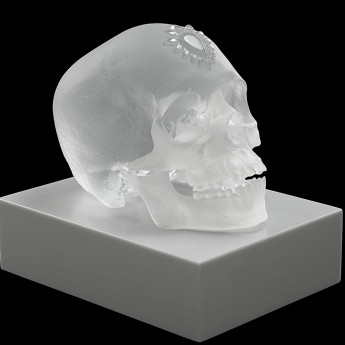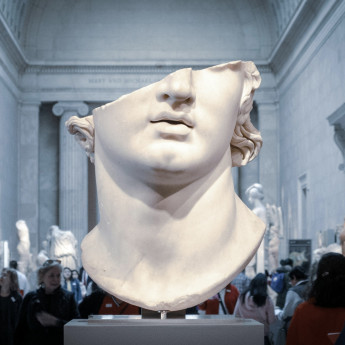
Details
Artist
Styles
Limited edition of 99 silkscreens - Hand signed and numbered by Uecker // Hiob Seite 25 by Günther Uecker is a silkscreen print characterized by its intense, chaotic arrangement of black, sweeping brushstrokes and dynamic lines. The composition, created with vigorous gestures, conveys a sense of turmoil and raw energy, echoing themes of struggle and resilience. The work is part of Uecker's exploration of the biblical story of Job (Hiob in German), whose narrative centers on suffering and perseverance. This limited edition print of 99 copies, signed and numbered by Uecker, reflects his distinctive approach to material and form, using texture and movement to evoke emotion and introspection. The dense, interwoven strokes invite viewers to interpret the visual language as a symbolic representation of endurance through hardship.
Hiob Seite 25
form
Medium
Size
52 x 50 cm
- Inches
- Centimeters
Edition
Price
- USD
- EUR
- GBP
Details
Artist
Styles
Limited edition of 99 silkscreens - Hand signed and numbered by Uecker // Hiob Seite 25 by Günther Uecker is a silkscreen print characterized by its intense, chaotic arrangement of black, sweeping brushstrokes and dynamic lines. The composition, created with vigorous gestures, conveys a sense of turmoil and raw energy, echoing themes of struggle and resilience. The work is part of Uecker's exploration of the biblical story of Job (Hiob in German), whose narrative centers on suffering and perseverance. This limited edition print of 99 copies, signed and numbered by Uecker, reflects his distinctive approach to material and form, using texture and movement to evoke emotion and introspection. The dense, interwoven strokes invite viewers to interpret the visual language as a symbolic representation of endurance through hardship.
- Recently Added
- Price (low-high )
- Price (high-low )
- Year (low-high )
- Year (high-low )
What is Found Object?
A found object is a term used to describe a man-made or natural object, or a fragment of one, that an artist discovers or purchases and keeps for inspiration or as a work of art. The artist may also modify the object or incorporate it into a collage or assemblage, transforming it into a new piece of art.







































